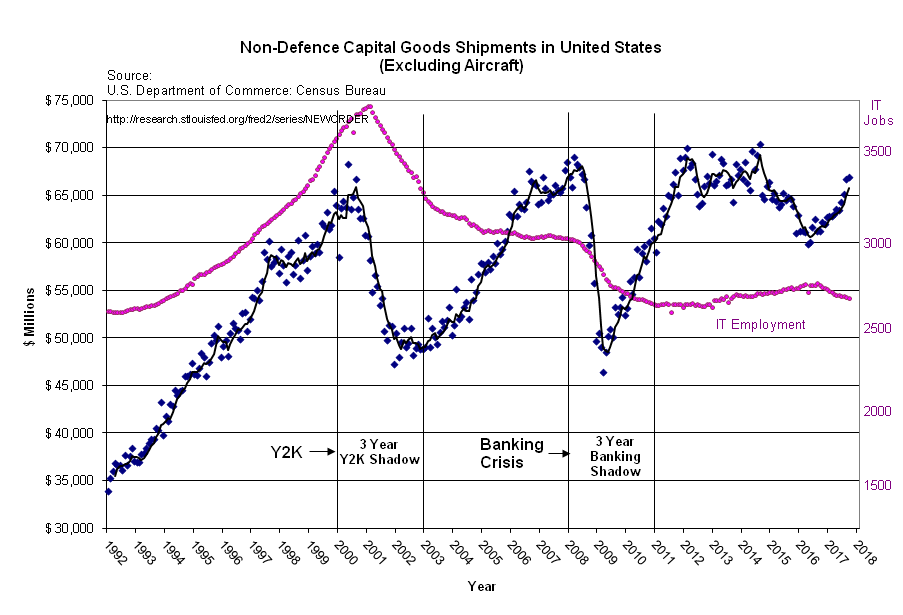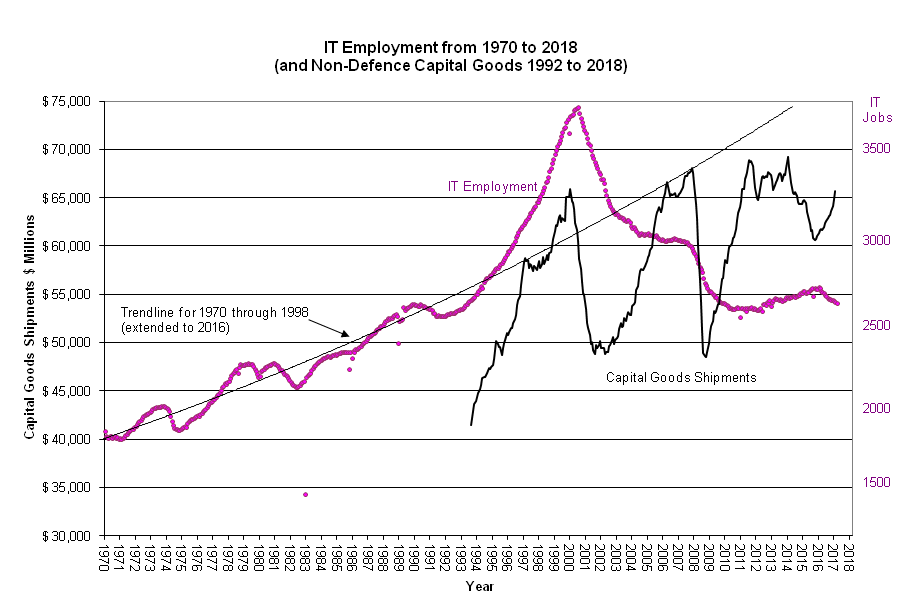|
|
 |
The Y2K Shadow
Once upon a time computer memory was very expensive. Programmers
who needed to save every byte decided to drop the century from all
the date records they had to store. Programmers had little faith
in the longevity of their code and none expected their 1993 programs
to still be in service in 1999. As the year 2000 approached programmers
began to get nervous about what 97,98,99,00 would do to their code.
Business managers tend to panic when their programmers get nervous
and IT project managers and consulting firms fanned the flames of
panic in order to extract large amounts of cash from businesses.
Do not misunderstand me. Y2K was real but so was U10K on May 19,
1997. Most the world's computer systems using Unix cores counted
their time in 4 character days starting on January 1, 1970 the year
the first Unix system went into operation at Bell Labs. May 18,
1997 was day 9999 and the next day was day 0000. There was a mad
scramble to fix all these systems before U10K. It never made headlines
and it never made IT professionals any money.
In fact there a crisis
dates occurring all the time - what made Y2K special was the
hype surrounding the turn of the millennium. More important the
Y2K computer problem caused a transfer of cash in the economy that
is the basis for the Y2K Shadow.
IT Employment Collapse in the Y2K Shadow
The post 2000 tech stock collapse had two root causes. The obvious
cause was that companies rushed to replace any computerized equipment
with a 99 to 00 problem. These were not just computer systems -
they included medical, industrial, commercial and military equipment
with embedded computer chips that had the Y2K problem. Spending
on capital equipment exploded in the years leading up to Y2K. Once
everyone had new equipment there was no need to buy more upgrades
so all the companies stopped capital spending at the same time hence
the "shadow".
What happened to all that money people in the technology sector
were taking home from 1995 through 2000? They had more than enough
to pay the rent so they invested the rest. Any good financial advisor
will tell you to invest in what you know so these folks invested
in a bright technological future and funded the dot.com boom.
Much of this money was not invested wisely but there was lots of money
around so who really cared. Of course when the Y2K shadow hit they
lost their jobs and started pulling money out of the market to pay
the rent. Most of the dot.com companies were still at the R&D
stage and a long way from profitability so there was no money to
pull out. But the rent was due so they pulled anyway and the prices
crashed on their risky dot.com stocks.
Most of the equipment installed for Y2K had a 3 to 5 year lifetime.
Everyone expected after the shadow the capex would return and so
would the jobs. From the graph you can see equipment purchases did
recover but IT jobs did not. In fact the peak in capex during 2007/8
only managed to flatten the decline in IT employment.
The financial collapse in 2008 caused a dramatic drop in capex and
a predictable loss of IT jobs. There is another 3 year shadow from that collapse
that extended into 2011. While capital spending recovered the economic conditions
for the average wage earner remains dreadful. It is especially clear from the graph
that the recovery in capex is not leading to a recovery in IT employment.

Click for larger [PDF] (or "view image")
If you look at a trend line from 1970 to 1998 there is promise of
continued IT growth. That promise is broken at the Y2K boundary and
IT employment in 2014 has dropped to late 1980s levels. A lot of this is
outsourcing and some it just that other people in the organization
are doing the work that used to be called "IT". Whatever the cause
the trend is undeniable: in Canada and the US like manufacturing IT
is no longer a good place to find work.

Click for larger [PDF] (or "view image")
Click here
for the spread sheet and the data.
So Why Does Industry Say There is an IT Shortage?
The innocent answer maybe they are reading the "Capital Spending" curve
and extrapolating that to a growth in IT staff. The reason for the disconnect
may be that we are actually getting more efficient in IT and we do not
need so many people.
There are also conspiracy theories. The simple one is that
IT workers are expensive and the law of supply in demand would predict
that a increase in the number of unemployed IT workers will suppress
the wage or working condition demands of those who actually get a job.
This was predicted in 2002 by Norman Matloff. See his presentation
"Debunking the Myth of a Desperate Software Labor Shortage"
here...and for a more recent (2013)
review of the problem see the excellent article in IEEE Spectrum "The STEM Crisis Is a Myth"
by Robert N. Charette cached here.
But IT was Such a Great Place to Work - What Now?
For whatever reason there is clearly a decline in demand for IT workers. The
hardest hit will be junior programmers. They are the easiest to outsource.
As junior staff picked up experience they became the source for more senior roles
as designers, architects, project managers and security. As the pool of junior people shrinks these
senior roles will almost certainly be outsourced quickening the decline.
It may be wise to consider sending your children to trade school. At least the demand for
plumbers and electricians is growing and cannot be outsourced or replaced by a
piece of technology. The trades are becoming more technical and less physical so
this is a viable alternative to those who would never be more than programmers.
If they have the math skills then there is a looming shortage of engineers. Engineering
has always grown in step with the overall economy. There was never the super growth
that made IT so attractive. On the plus side it is highly unlikely there will be the kind
of collapse IT is experiencing. It is true both China and India are now graduating a
lot of engineers but the also need a lot of engineers and their demand will almost certainly
outstrip supply for a generation.
The bottom line is that the link between IT and capex has been broken and the demand
for traditional IT worker will continue to decline. If you want to find secure employment
don't be fooled by 1990's stories of a wonderful future in IT.
|

